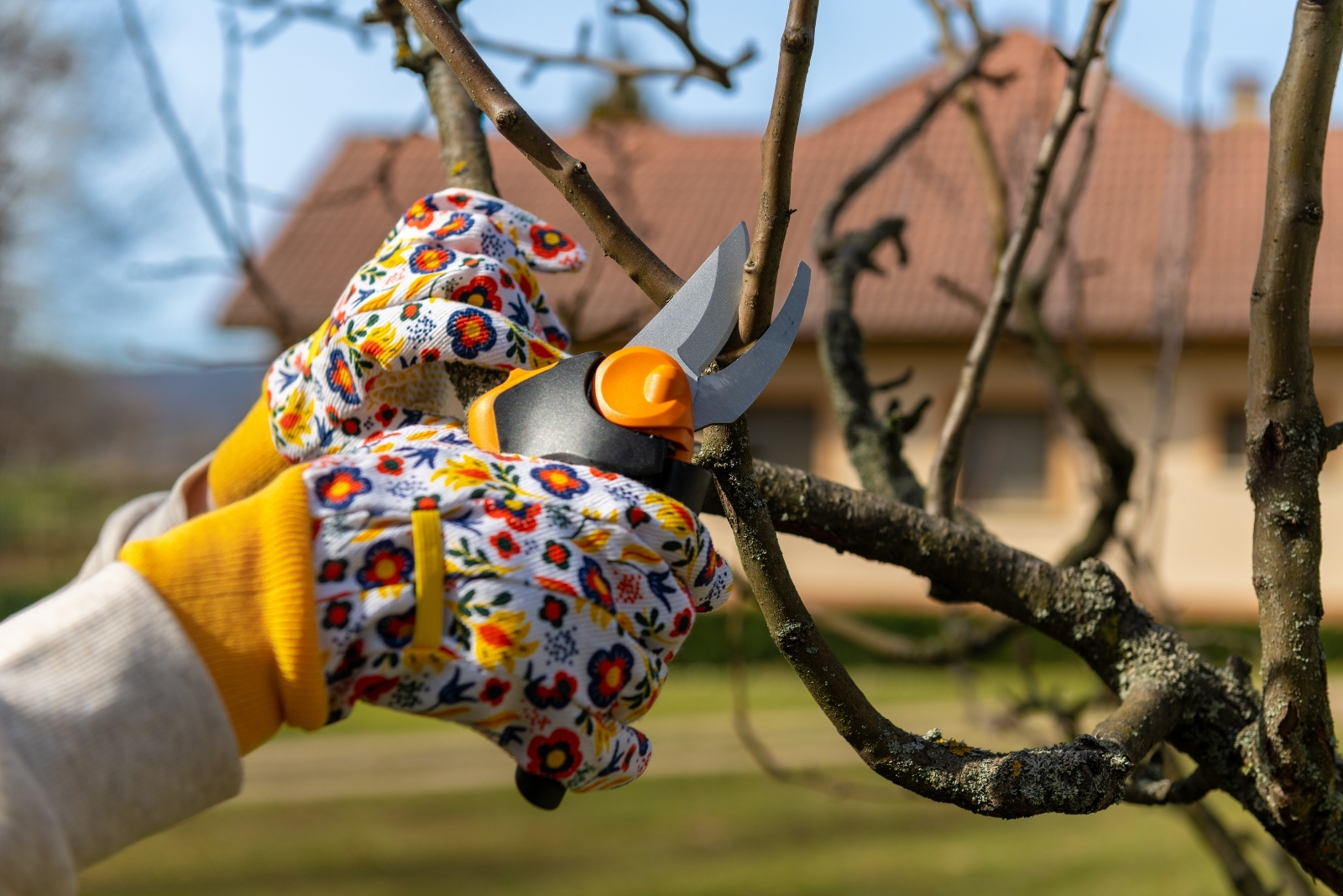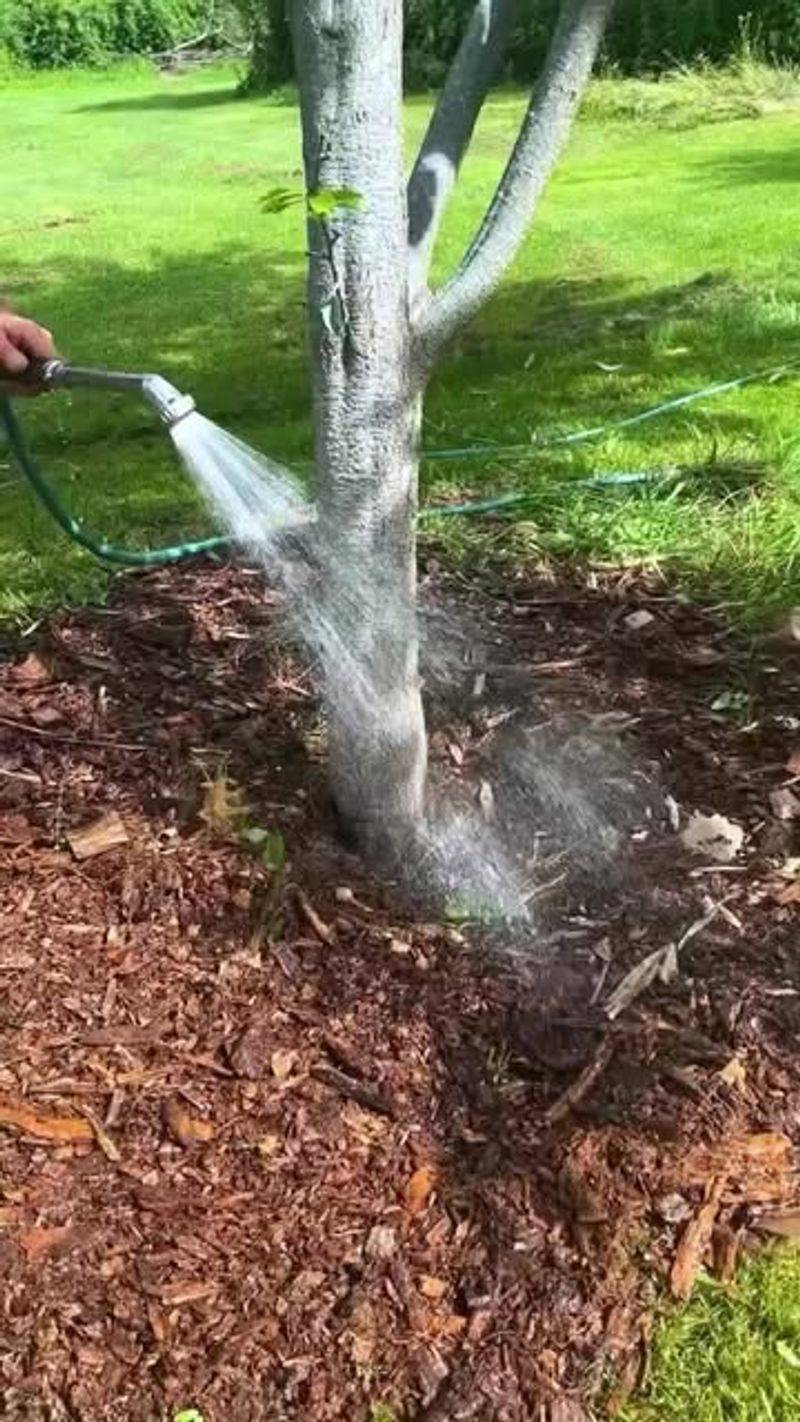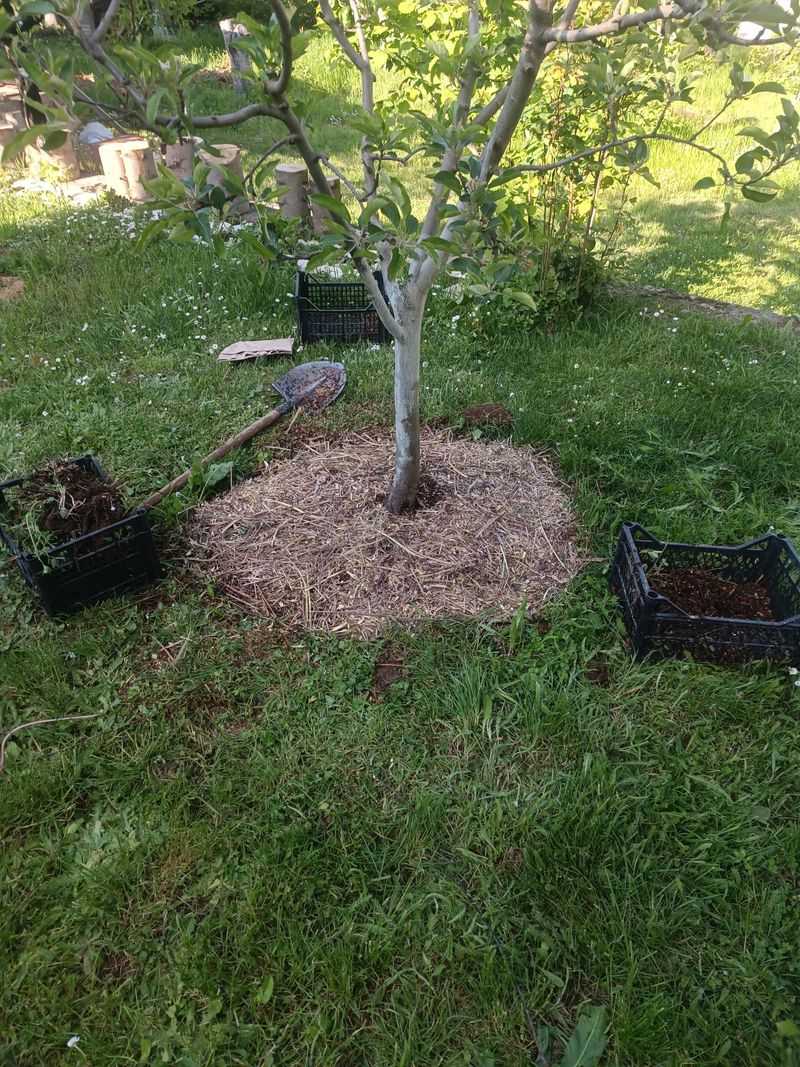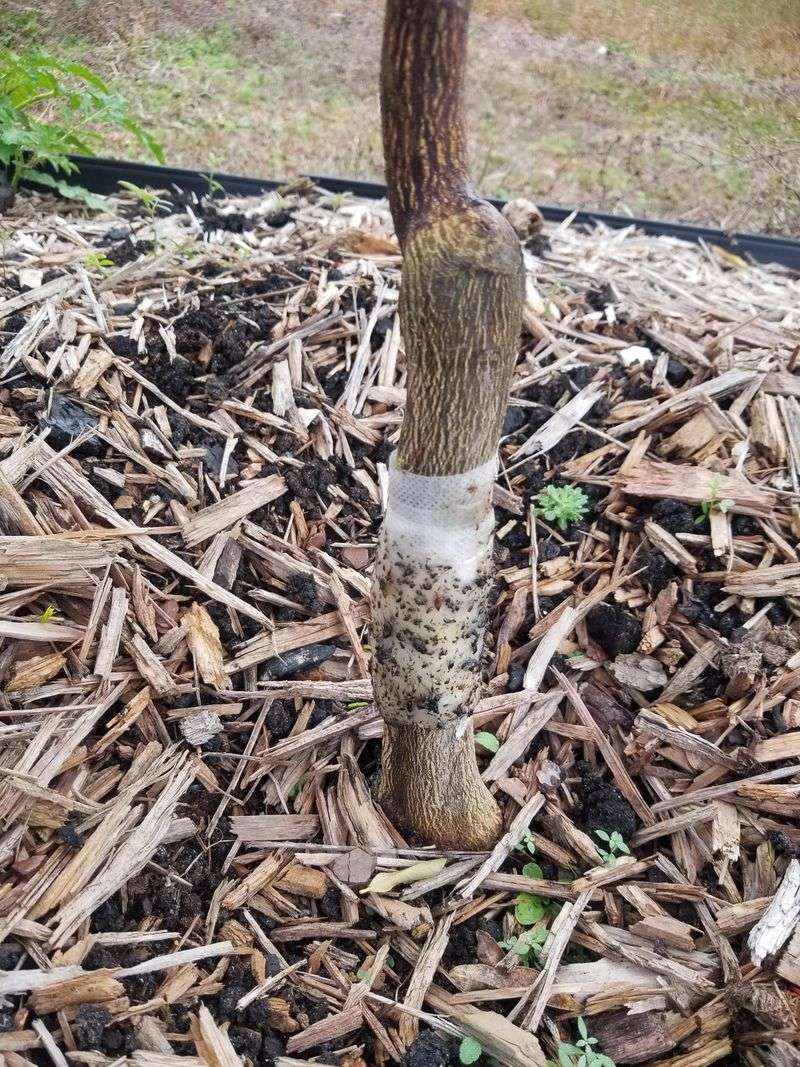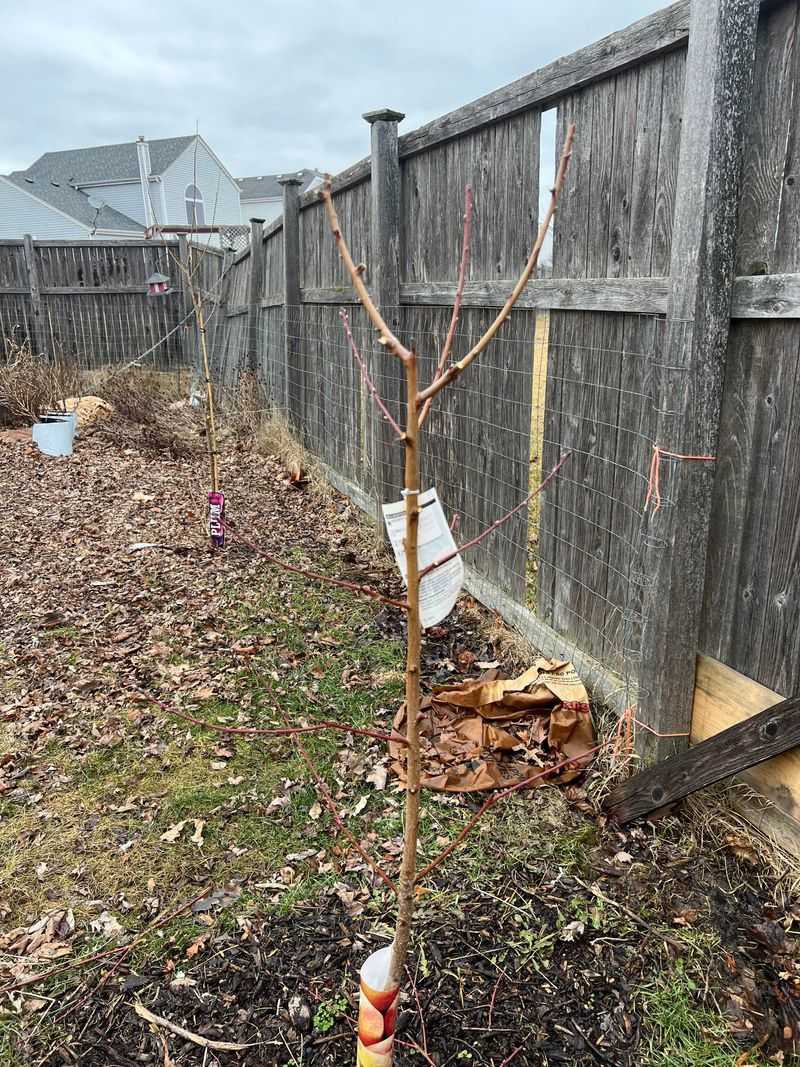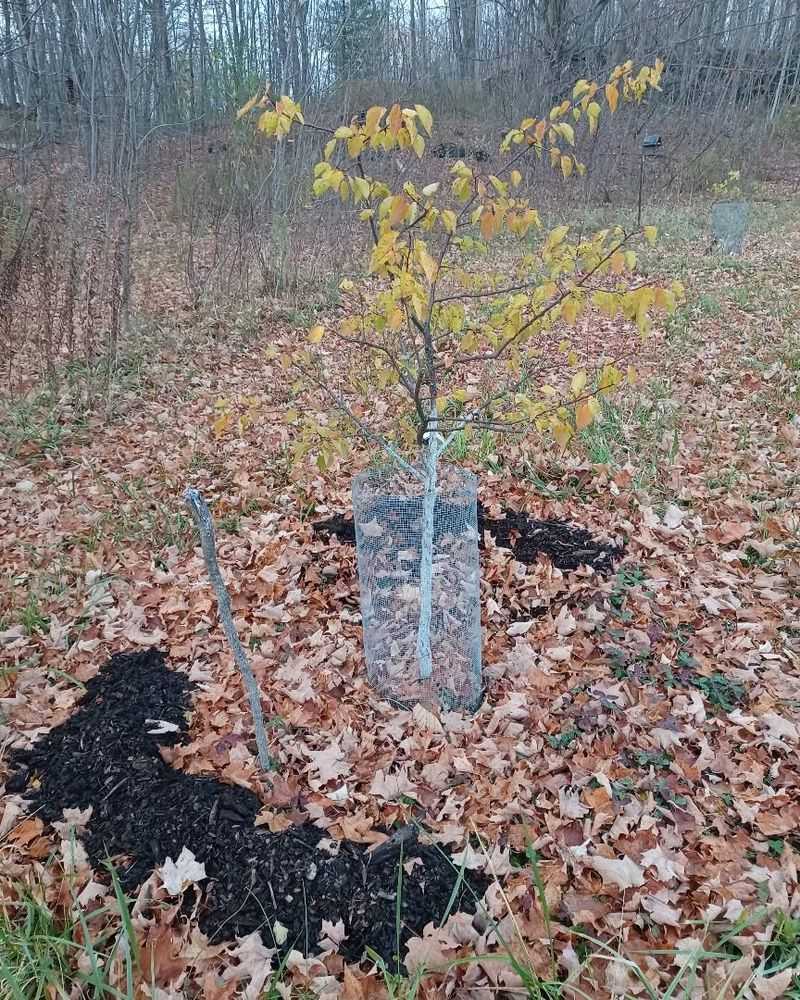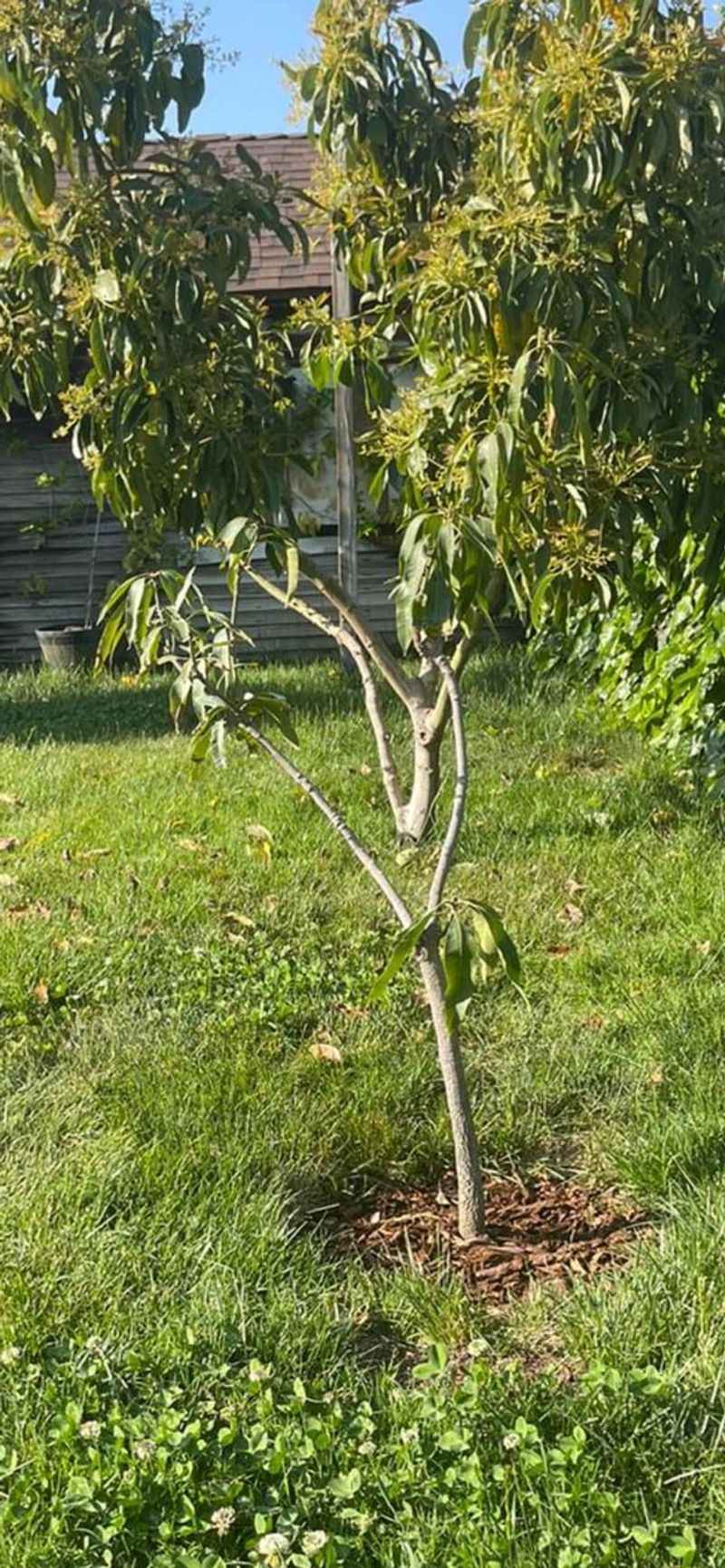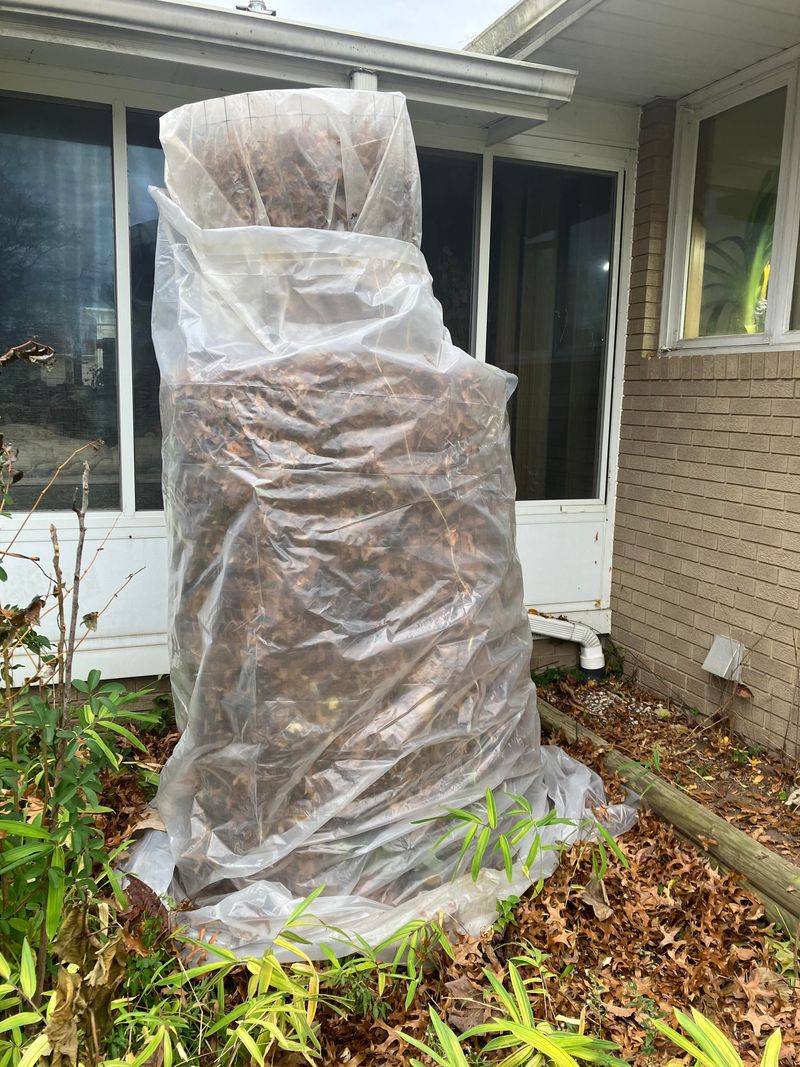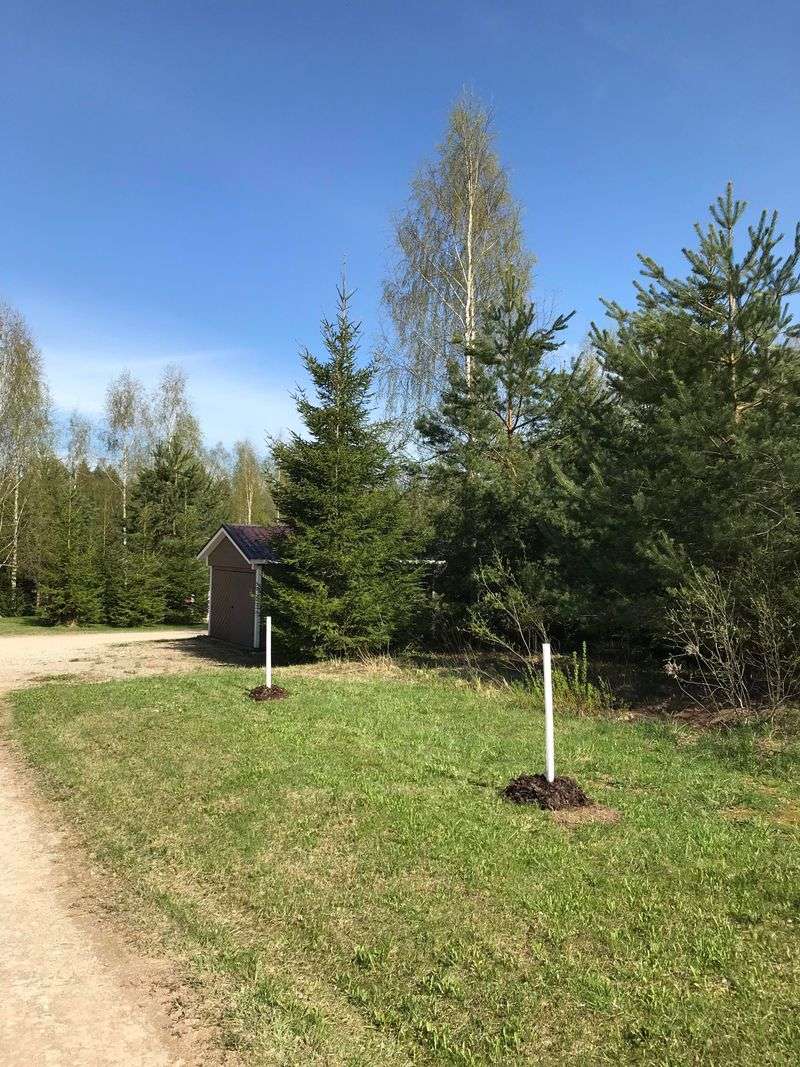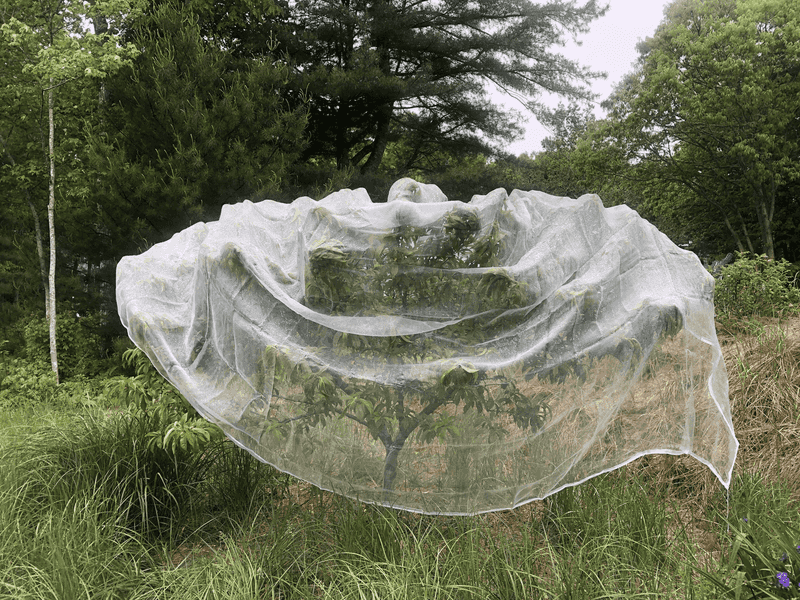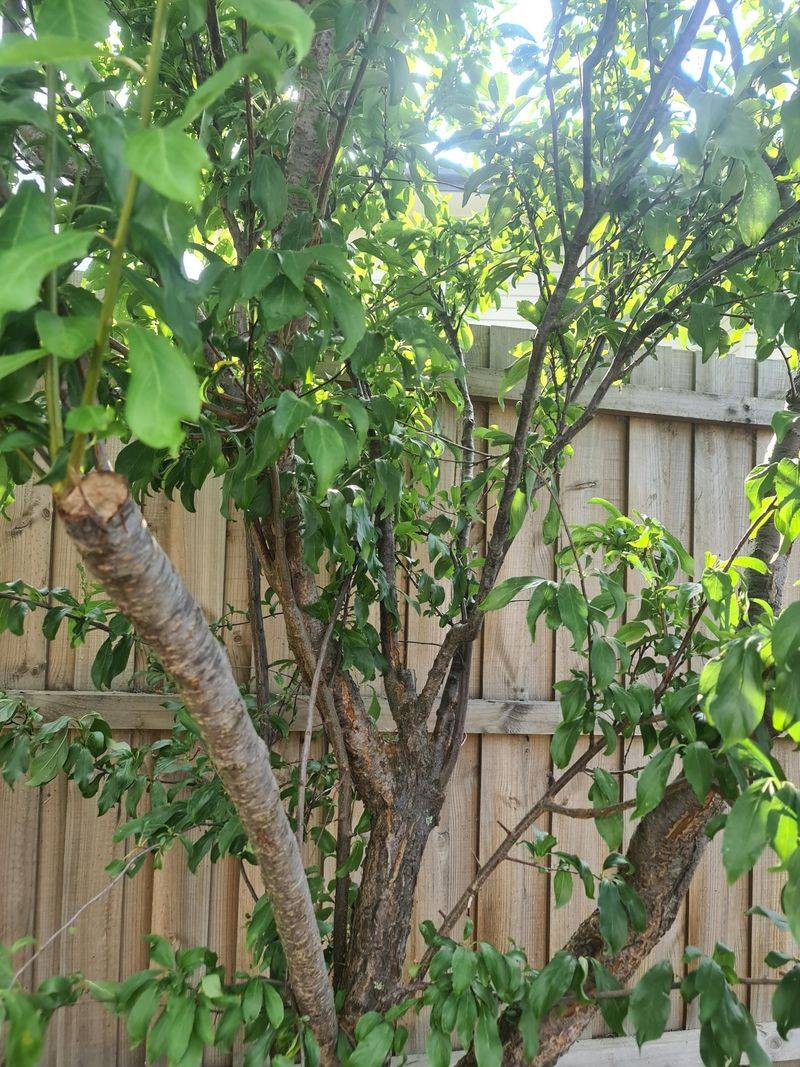North Carolina winters can test fruit trees, especially young ones. Preparing them before the cold hits protects buds, branches, and future harvests.
Wrapping, mulching, and pruning are simple steps that go a long way. A few extra minutes of care now pays off with healthy trees in spring.
1. Water Deeply Before the First Freeze
Roots need plenty of moisture stored up before winter hits hard. Give your fruit trees a good, deep watering about a week before temperatures drop below freezing.
Well-hydrated trees handle cold stress much better than thirsty ones. Many North Carolina gardeners forget this crucial step, but it makes a real difference in tree survival rates during harsh winters.
2. Apply Fresh Mulch Around the Base
A thick layer of organic mulch acts like a cozy blanket for tree roots. Spread about four inches of wood chips, pine straw, or shredded leaves around the base, keeping it a few inches away from the trunk.
Across North Carolina, mulch helps regulate soil temperature and prevents the freeze-thaw cycles that damage roots. Just don’t pile it against the bark, or you’ll invite pests and disease.
3. Wrap Young Tree Trunks for Protection
Young bark is especially vulnerable to sunscald and frost cracks during winter. Wrapping the trunk with tree wrap or burlap provides essential protection from temperature swings.
Start at the bottom and spiral upward, overlapping each layer slightly. North Carolina’s winter sun can be surprisingly intense on clear days, causing bark to warm up and then freeze rapidly at night, leading to splitting and damage.
4. Prune at the Right Time
Timing matters tremendously when it comes to pruning fruit trees. Wait until late winter when trees are fully dormant but before buds start swelling in early spring.
Pruning too early in North Carolina can stimulate new growth that gets zapped by late freezes. Remove dead, diseased, or crossing branches to improve air circulation and reduce winter damage. Save major shaping work for after the coldest weather passes completely.
5. Fertilize Strategically in Fall
Stop feeding your trees nitrogen-rich fertilizers by late summer. Nitrogen encourages soft, new growth that won’t survive freezing temperatures.
Instead, apply a phosphorus and potassium blend in early fall to strengthen roots and improve cold hardiness. North Carolina fruit growers know that well-fed trees enter dormancy stronger and emerge healthier. Avoid any fertilizing after October to prevent encouraging vulnerable late-season growth.
6. Protect Grafts and Bud Unions
The graft union where your fruit variety meets the rootstock is particularly sensitive to cold damage. Mound soil or mulch around this vulnerable area for extra insulation.
Many fruit trees in North Carolina are grafted, and losing the graft means losing your desired fruit variety. Check that the protective mound extends several inches above the graft line, then remove it once spring warmth returns to prevent rot.
7. Install Windbreaks for Exposed Trees
Cold winter winds can quickly dry out and damage fruit tree branches and buds. Setting up burlap screens or planting evergreen shrubs on the windward side creates a protective barrier.
Even temporary windbreaks make a noticeable difference in tree health across North Carolina’s open landscapes. Position barriers about three feet away from the tree to allow air circulation while blocking harsh gusts that cause desiccation and temperature stress.
8. Check and Repair Tree Guards
Hungry rabbits, deer, and mice love gnawing on fruit tree bark during winter when other food is scarce. Inspect existing tree guards for damage and replace them if needed.
Hardware cloth or plastic guards should extend from below the soil line up to the first branches. North Carolina wildlife becomes desperate in harsh winters, and even small amounts of bark damage can kill young trees or weaken mature ones significantly.
9. Monitor Weather and Cover When Needed
Keep blankets, tarps, or frost cloths handy for unexpected cold snaps. When forecasts predict temperatures below what your trees can handle, drape covers over them before sunset.
Remove coverings once morning temperatures rise above freezing. North Carolina weather can surprise you with sudden freezes, especially in early spring when trees have already started budding. Acting quickly with temporary protection saves developing fruit and prevents blossom loss.
10. Inspect for Pest and Disease Issues
Winter is the perfect time to look for signs of trouble without leaves blocking your view. Check for cankers, egg masses, and damaged bark that could worsen during cold weather.
Remove any mummified fruit still hanging on branches, as these harbor diseases and pests. North Carolina orchardists know that winter cleanup prevents spring problems. Spray dormant oil if needed to smother overwintering insects before they wake up hungry.

